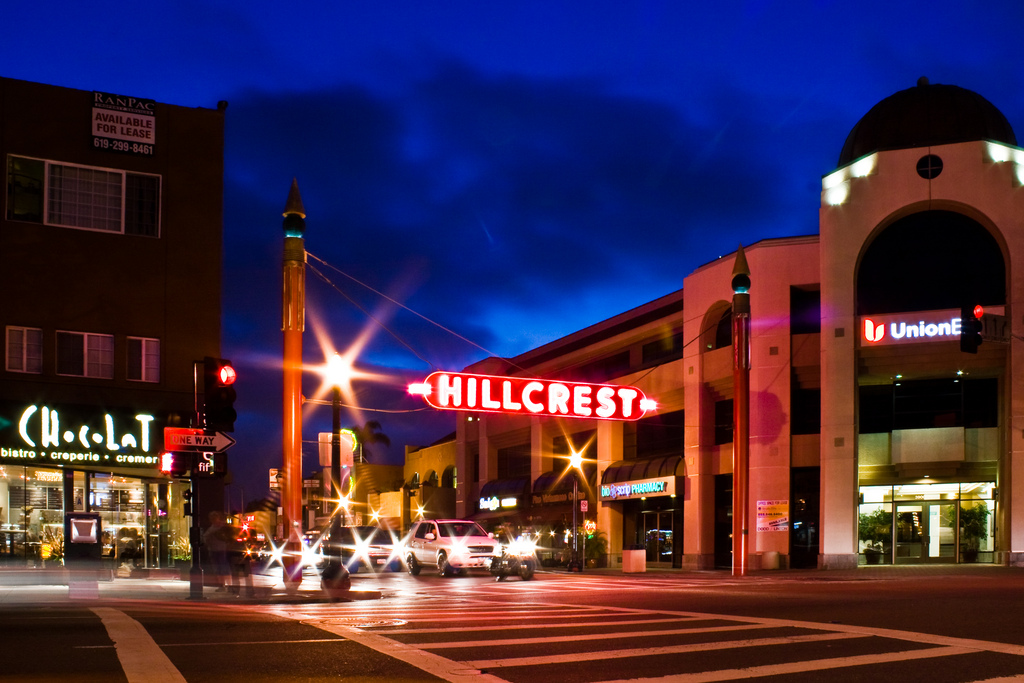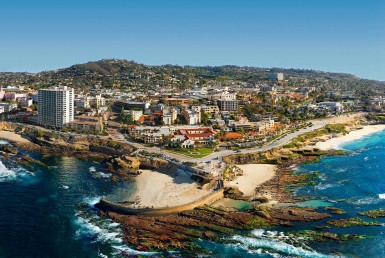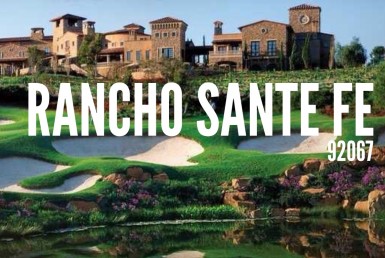Hillcrest, San Diego

Hillcrest median real estate price is $699,090, which is more expensive than 71.2% of the neighborhoods in California and 93.4% of the neighborhoods in the U.S.
The average rental price in Hillcrest is currently $1,776, based on NeighborhoodScout’s exclusive analysis. Rents here are currently lower in price than 45.4% of California neighborhoods.
Hillcrest is a densely urban neighborhood (based on population density) located in San Diego, California.
Hillcrest real estate is primarily made up of small (studio to two bedroom) to medium sized (three or four bedroom) apartment complexes/high-rise apartments and small apartment buildings. Most of the residential real estate is renter occupied. Many of the residences in the Hillcrest neighborhood are established but not old, having been built between 1970 and 1999. A number of residences were also built before 1940.
Hillcrest has a 15.3% vacancy rate, which is well above average compared to other U.S. neighborhoods (higher than 75.7% of American neighborhoods). Most vacant housing here is vacant year round. This could either signal that there is a weak demand for real estate in the neighborhood or that large amount of new housing has been built and not yet occupied. Either way, if you live here, you may find many of the homes or apartments are empty.
Notable & Unique Neighborhood Characteristics
When you see a neighborhood for the first time, the most important thing is often the way it looks, like its homes and its setting. Some places look the same, but they only reveal their true character after living in them for a while because they contain a unique mix of occupational or cultural groups. This neighborhood is very unique in some important ways, according to NeighborhoodScout’s exclusive exploration and analysis.
Notable & Unique: People
The first thing that you’ll notice if you moved to this neighborhood is that an astounding 5.8% of the households are same sex couples. According to NeighborhoodScout’s analysis, this is a higher proportion of same sex households than in 99.8% of the neighborhoods in America. This is one indicator that this neighborhood is likely a gay-friendly neighborhood. So if you are looking for such a neighborhood, the Hillcrest neighborhood should definitely be on your list of places to consider.
Notable & Unique: Real Estate
The Hillcrest neighborhood is very unique in that it has one of the highest proportions of one, two, or no bedroom real estate of any neighborhood in America. Most neighborhoods have a mixture of home or apartment sizes from small to large, but here the concentration of studios and other small living spaces is at near-record heights. With 89.8% of the real estate here of this small size, this most assuredly is a notable feature that makes this neighborhood unique, along with just a handful of other neighborhoods in the U.S. that share this characteristic.
In addition, one of the really unique and interesting things about the look and setting of the Hillcrest neighborhood is that it is almost entirely dominated by large apartment buildings, such as apartment complexes or high-rise apartments. 70.9% of the residential real estate here is classified as such. This puts this neighborhood on the map as having a higher proportion of large apartment buildings than 95.9% of all neighborhoods in America.
Notable & Unique: Modes of Transportation
Would you like to be able to ride your bike to work? If you are attracted to the idea of getting a little exercise of the two-wheeled type while reducing your carbon footprint, bicycling to work might be the answer. But which neighborhood you live in can make this either impossible, or alternatively, a great and realistic option. NeighborhoodScout’s analysis revealed that the Hillcrest neighborhood is a fantastic option for bicycle commuters, as 5.1% of commuters here do ride their bikes to and from work on a daily basis. This is a higher amount than we found in 97.5% of the neighborhoods in America.
Also, in the Hillcrest neighborhood, walking to work is a real option for many. In fact, NeighborhoodScout’s exclusive research reveals walking to and from work is the chosen way to commute for 12.5% of residents here. This is a higher proportion of walking commuters than we found in 95.4% of American neighborhoods. Get ready to put on your walking shoes if you move here!
Notable & Unique: Diversity
Did you know that the Hillcrest neighborhood has more Swiss and Danish ancestry people living in it than nearly any neighborhood in America? It’s true! In fact, 1.8% of this neighborhood’s residents have Swiss ancestry and 2.4% have Danish ancestry.
Hillcrest is also pretty special linguistically. Significantly, 0.4% of its residents five years old and above primarily speak Mon-Khmer, which is the dominant language of Cambodia, at home. While this may seem like a small percentage, it is higher than 96.3% of the neighborhoods in America.
Notable & Unique: Occupations
Executives, managers and professionals make up 63.6% of the workforce in the Hillcrest neighborhood which, according to NeighborhoodScout’s exclusive analysis, is a higher proportion of such high-level people than is found in 95.1% of the neighborhoods in America. For this reason, this neighborhood really stands out as unique.
The Neighbors: Income
There are two complementary measures for understanding the income of a neighborhood’s residents: the average and the extremes. While a neighborhood may be relatively wealthy overall, it is equally important to understand the rate of people – particularly children – who are living at or below the federal poverty line, which is extremely low income. Some neighborhoods with a lower average income may actually have a lower childhood poverty rate than another with a higher average income, and this helps us understand the conditions and character of a neighborhood.
The neighbors in the Hillcrest neighborhood in San Diego are upper-middle income, making it an above average income neighborhood. NeighborhoodScout’s exclusive analysis reveals that this neighborhood has a higher income than 77.3% of the neighborhoods in America. With 26.0% of the children here below the federal poverty line, this neighborhood has a higher rate of childhood poverty than 66.7% of U.S. neighborhoods.
The Neighbors: Occupations
What we choose to do for a living reflects who we are. Each neighborhood has a different mix of occupations represented, and together these tell you about the neighborhood and help you understand if this neighborhood may fit your lifestyle.
In the Hillcrest neighborhood, 63.6% of the working population is employed in executive, management, and professional occupations. The second most important occupational group in this neighborhood is sales and service jobs, from major sales accounts, to working in fast food restaurants, with 20.0% of the residents employed. Other residents here are employed in clerical, assistant, and tech support occupations (9.9%), and 6.5% in manufacturing and laborer occupations.
The Neighbors: Ethnicity / Ancestry
Boston’s Beacon Hill blue-blood streets, Brooklyn’s Orthodox Jewish enclaves, Los Angeles’ Persian neighborhoods. Each has its own culture derived primarily from the ancestries and culture of the residents who call these neighborhoods home. Likewise, each neighborhood in America has its own culture – some more unique than others – based on lifestyle, occupations, the types of households – and importantly – on the ethnicities and ancestries of the people who live in the neighborhood. Understanding where people came from, who their grandparents or great-grandparents were, can help you understand how a neighborhood is today.
In the Hillcrest neighborhood in San Diego, CA, residents most commonly identify their ethnicity or ancestry as German (14.5%). There are also a number of people of Irish ancestry (12.6%), and residents who report Mexican roots (11.6%), and some of the residents are also of English ancestry (10.8%), along with some Italian ancestry residents (5.4%), among others. In addition, 12.9% of the residents of this neighborhood were born in another country.
The Neighbors: Languages
The languages spoken by people in this neighborhood are diverse. These are tabulated as the languages people preferentially speak when they are at home with their families. The most common language spoken in the Hillcrest neighborhood is English, spoken by 80.7% of households. Other important languages spoken here include Spanish and French.
Getting to Work
Even if your neighborhood is walkable, you may still have to drive to your place of work. Some neighborhoods are located where many can get to work in just a few minutes, while others are located such that most residents have a long and arduous commute. The greatest number of commuters in Hillcrest neighborhood spend between 15 and 30 minutes commuting one-way to work (46.5% of working residents), which is shorter than the time spent commuting to work for most Americans.
Here most residents (75.4%) drive alone in a private automobile to get to work. In addition, quite a number also hop out the door and walk to work to get to work (12.5%) and 5.1% of residents also bicycle for their daily commute. In a neighborhood like this, as in most of the nation, many residents find owning a car useful for getting to work.



